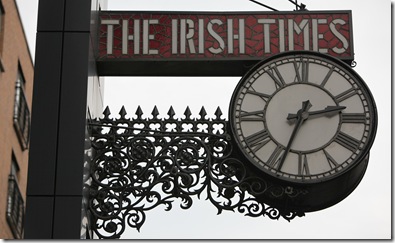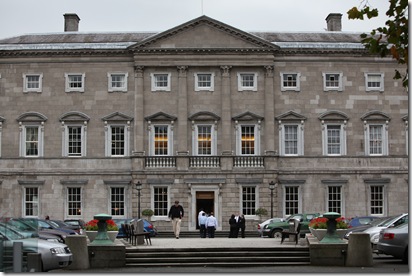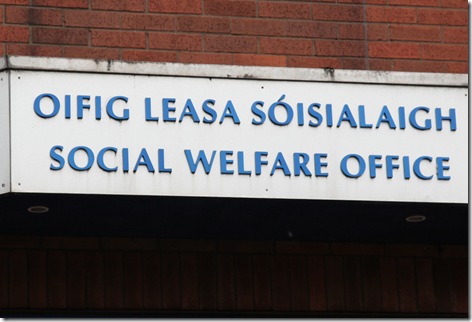 The Revenue Commissioners collected 19% less tax in 2009 than in 2008 but they were activity level in other areas was consistently frenetic – as one might expect of a public sector agency that is second-to-none when it comes to high standards of efficiency and effectiveness.
The Revenue Commissioners collected 19% less tax in 2009 than in 2008 but they were activity level in other areas was consistently frenetic – as one might expect of a public sector agency that is second-to-none when it comes to high standards of efficiency and effectiveness.
The impact of the downturn on taxes in 2009 varied by tax heading.
| Category | € | % Change v 2008 |
| Customs | 208,598,000 | -15.9% |
| Excise | 4,702,552,000 | -13.6% |
| Capital Acquisition Tax | 254,258,000 | -23.2% |
| Capital Gains Tax | 541,849,000 | -62.1% |
| Stamps | 929,510 | -43.7% |
| Income Tax (+ levy) | 11,835,235,000 | -10.2% |
| Corporation Tax | 3,900,306,000 | -23.0% |
| VAT | 10,669,652,000 | -20.6% |
| Other levies | 1,213,000 | |
| TOTAL | €33,043,173,000 | -19.0% |
Tax Audits and Compliance Checks
Some 12,404 taxpayer audits in 2009 yielded €598.6 million. The comparable figures for 2008 were 13,406 taxpayer audits that yielded €570 million
There were 361,299 assurance checks, 15,877 more than in 2008, that yielded tax revenue of €68.5 million (+€5.5 million)
Special Revenue Investigations
The tax yield from special investigations, €114.35 million was 109% higher than in 2008. Special investigations embrace the evasion of Deposit Interest Retention Tax, Bogus non-resident deposit accounts, offshore assets, certain life assurance products, offshore Ansbacher accounts, Tribunals, National Irish Bank, Interest Reporting and certain trust and offshore structures used to conceal tax obligations.
There were 1,490 Special Investigations in 2009. The cash cow in 2009, from a Revenue Commissioner perspective, was Interest Reporting when 1,214 taxpayers paid €55.3 million to the Revenue Commissioners, a liability they presumably would have preferred not to have arisen.
The cumulative yield from Special Investigations is €2,603.5 million from a total of 34,335 cases, including €41 million derived as a consequence of tribunals from 23 individuals.
Convictions
There were 453 convictions arising from Revenue matters in 2008 but this figure rose to 2,144 convictions in 2009, mainly attributable to persons convicted for the non-filing of returns. There were 20 convictions for serious tax evasion in Ireland in 2008 and 10 such convictions in 2009.
Revenue Seizures
The Revenue Commissioners have been particularly successful in the seizure of illicit drugs, tobacco and other products.
Drug Seizures
| 2008 | 2009 | % Change | |
| Cannabis | |||
| Number of seizures | 2,441 | 2,166 | -11.3% |
| Volume seized, KG | 3,655 | 3,443.1 | -5.8% |
| Value seized | €27,900,000 | €30,200,000 | 8.2% |
| Cocaine and heroin | |||
| Number of seizures | 76 | 39 | -48.7% |
| Volume seized, KG | 1,615 | 33.1 | -98.0% |
| Value seized | €517,200,000 | €2,300,000 | -99.6% |
| Amphetamines, Ecstasy and other | |||
| Number of seizures | 4,118 | 5,983 | 45.3% |
| Volume seized, KG | 115 | 405.8 | 252.9% |
| Value seized | €2,300,000 | €6,300,000 | 173.9% |
The 2008 figures include a €500 million cocaine seizure off the coast of West Cork.
Tobacco Seizures
Last year was hectic as far as tobacco seizures are concerned!
| 2008 | 2009 | % Change | |
| Cigarettes | |||
| Number of seizures | 10,143 | 10,600 | 4.5% |
| Volume seized | 134,800,000 | 218,500,000 | 62.1% |
| Value seized | €54,300,000 | €92,100,000 | 69.6% |
| Tobacco | |||
| Number of seizures | 1,094 | 1,171 | 7.0% |
| Volume seized – KG | 2,965.0 | 10,451.0 | 252.5% |
| Value seized | €1,000,000 | €3,700,000 | 270.0% |
The Revenue Commissioners also made 34 seizures in 2009 of suspected criminal cash amounting to €1.35 million.










